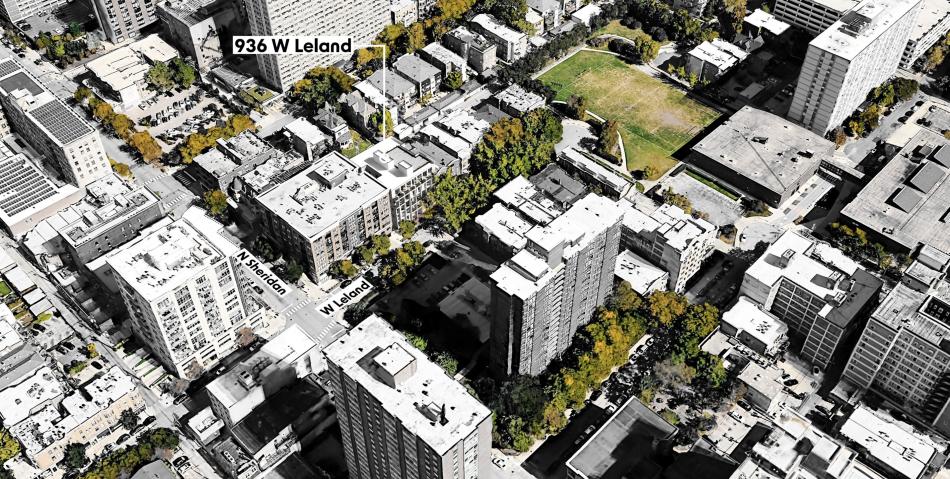Four-fifths of the world’s population now live in urban areas – New Scientist

Global Urbanization Trends and Implications for Sustainable Development Goals
Report on Global Urbanization Statistics
A recent United Nations-affiliated report indicates a significant increase in global urbanization, with findings crucial for assessing progress towards the Sustainable Development Goals (SDGs), particularly SDG 11 (Sustainable Cities and Communities). The study reveals that 81 per cent of the world’s population currently resides in urban areas, a figure projected to rise to 83 per cent by 2050.
Standardizing Urban Definitions for Accurate SDG Monitoring
Previous estimates, such as the 2018 World Urbanisation Prospects report which cited a 55 per cent urban population, were hampered by inconsistent national definitions of “urban.” To create a globally comparable metric essential for tracking SDG progress, this report established a standardized methodology:
- Cities: Defined as areas with a minimum of 50,000 inhabitants and a population density of at least 1,500 individuals per square kilometre.
- Towns: Defined as areas with at least 5,000 inhabitants and a density of at least 300 people per square kilometre.
Based on this new framework, analysis of data from 237 countries shows the current global population distribution is 45 per cent in cities and 36 per cent in towns. The number of rural inhabitants is expected to peak in the 2040s before declining.
Urbanization’s Direct Impact on SDG 11: Sustainable Cities and Communities
Informing Policy for Climate Action and Sustainable Development
These revised urbanization estimates provide a critical baseline for evaluating progress towards SDG 11, which aims to make human settlements inclusive, safe, resilient, and sustainable. The data will also inform key climate reports, such as those by the Intergovernmental Panel on Climate Change (IPCC), directly supporting efforts under SDG 13 (Climate Action).
Challenges and Opportunities for Sustainable Urban Planning
The drivers and consequences of urban growth present both challenges and opportunities for achieving the SDGs:
- Regional Growth Drivers: Urban growth is driven by various factors, including internal migration for education and employment (Asia), international migration (Europe and North America), and high birth rates (sub-Saharan Africa). Understanding these drivers is key to developing targeted policies that support SDG 8 (Decent Work and Economic Growth) and SDG 10 (Reduced Inequalities).
- Environmental Impact: Unplanned urban expansion can lead to sprawl and increased carbon emissions from transportation, undermining SDG 11 and SDG 13. Conversely, strategic urban planning offers opportunities for energy-efficient public transport and infrastructure, contributing to SDG 7 (Affordable and Clean Energy) and SDG 9 (Industry, Innovation and Infrastructure).
Broader SDG Implications of Rapid Urbanization
Health and Well-being in Urban Environments (SDG 3)
Urbanization has a dual impact on SDG 3 (Good Health and Well-being). While cities offer improved access to comprehensive healthcare and social opportunities, they also pose significant health risks.
- Health Risks: Increased exposure to air pollution and extreme heat in cities is linked to cardiovascular and neurological conditions. A lack of green space is associated with higher rates of anxiety and depression.
- Health Benefits: Urban centres typically provide more responsive and comprehensive healthcare services and greater opportunities for social connection compared to rural areas.
The Imperative for Green and Resilient Cities
The report underscores the urgent need to redesign urban environments to be more livable and sustainable. The focus must be on creating greener cities to mitigate negative health and environmental impacts. This approach directly supports multiple goals, including SDG 3, SDG 11, SDG 13, and SDG 15 (Life on Land), by improving public health, enhancing biodiversity, and building resilience to climate change.
SDGs Addressed in the Article
-
SDG 11: Sustainable Cities and Communities
- The article explicitly mentions this goal, stating that the new urbanization estimates “will help the UN assess progress towards its 11th sustainable development goal, which aims to ‘make cities and human settlements inclusive, safe, resilient and sustainable’ by 2030”. The entire article revolves around the theme of global urbanization, its challenges (urban sprawl, pollution), and the need for sustainable urban planning.
-
SDG 3: Good Health and Well-being
- The article extensively discusses the health effects of urbanization. It highlights negative impacts such as exposure to “air pollution and extreme heat in cities,” which are linked to “worse cardiovascular health” and conditions like “Alzheimer’s disease.” It also points to mental health issues, noting that a “lack of green space in some urban areas is linked to increased anxiety and depression.” Conversely, it mentions health benefits, such as healthcare being “more responsive” and “comprehensive in cities compared to rural areas.”
-
SDG 13: Climate Action
- The article connects urbanization directly to climate change. It explains how unplanned city expansion can “lead to urban sprawl, where people rely heavily on cars – increasing carbon emissions.” It also notes that the research findings will “help shape policies to reduce global warming by feeding into reports produced by the Intergovernmental Panel on Climate Change.”
Specific SDG Targets Identified
-
Target 11.2: Provide access to safe, affordable, accessible and sustainable transport systems for all.
- This target is identified through the discussion on urban planning and transportation. The article warns that if “public transport links are not planned appropriately, this can lead to urban sprawl, where people rely heavily on cars.” It contrasts this with “careful planning” that “can provide transportation that is more energy-efficient than what is available in rural regions.”
-
Target 11.6: Reduce the adverse per capita environmental impact of cities, including by paying special attention to air quality.
- This target is relevant because the article points out that in cities, “people are generally more exposed to air pollution.” This highlights the need to manage and reduce the negative environmental impacts, specifically air quality, which is a key component of this target.
-
Target 11.7: Provide universal access to safe, inclusive and accessible, green and public spaces.
- The article’s conclusion emphasizes this target by quoting an expert who says, “it’s now more urgent than ever to think about how to make our cities more liveable, and this means greener – with all the benefits that brings.” It also links a “lack of green space” to negative mental health outcomes like “increased anxiety and depression.”
-
Target 3.9: Substantially reduce the number of deaths and illnesses from hazardous chemicals and air, water and soil pollution and contamination.
- This target is directly addressed when the article discusses the health consequences of urban living, stating that exposure to “air pollution and extreme heat in cities” has been linked to “worse cardiovascular health” and other diseases, implying a need to reduce illnesses caused by environmental pollution.
-
Target 13.2: Integrate climate change measures into national policies, strategies and planning.
- The article connects its findings to this target by stating that the results will “help shape policies to reduce global warming.” The discussion about urban sprawl leading to “increasing carbon emissions” further underscores the need to integrate climate considerations into urban planning and national policies.
Indicators Mentioned or Implied
-
Indicator related to Air Quality (Implied for Target 11.6 and 3.9)
- The article’s repeated mention of “air pollution” as a major health hazard in cities implies the need for an indicator to measure it. This corresponds to official indicators like Indicator 11.6.2: Annual mean levels of fine particulate matter (e.g., PM2.5) in cities (population-weighted). Measuring this would be essential to track progress in reducing the adverse health effects discussed.
-
Indicator related to Access to Public Transport (Implied for Target 11.2)
- By highlighting the negative consequences of cities where “people rely heavily on cars” due to poorly planned “public transport links,” the article implies the importance of measuring access to sustainable transport. This relates to Indicator 11.2.1: Proportion of population that has convenient access to public transport, which would quantify how well a city is planned to avoid car dependency.
-
Indicator related to Green/Public Space (Implied for Target 11.7)
- The article’s call to make cities “greener” and its reference to the “lack of green space” as a cause of anxiety and depression implies the need for an indicator to measure the availability of such spaces. This points to Indicator 11.7.1: Average share of the built-up area of cities that is open space for public use for all.
-
Indicator related to Greenhouse Gas Emissions (Implied for Target 13.2)
- The article’s concern that urban sprawl and car dependency are “increasing carbon emissions” implies the need to measure these emissions. Progress towards climate goals, as mentioned in the article, would be tracked by indicators measuring total greenhouse gas emissions, which are a key metric for assessing the impact of urbanization on climate change.
Summary Table of SDGs, Targets, and Indicators
| SDGs | Targets | Indicators (Implied from the article) |
|---|---|---|
| SDG 11: Sustainable Cities and Communities | Target 11.2: Provide access to safe, affordable, accessible and sustainable transport systems for all. | Proportion of the population with convenient access to public transport. |
| SDG 11: Sustainable Cities and Communities | Target 11.6: Reduce the adverse per capita environmental impact of cities, including by paying special attention to air quality. | Annual mean levels of fine particulate matter in cities. |
| SDG 11: Sustainable Cities and Communities | Target 11.7: Provide universal access to safe, inclusive and accessible, green and public spaces. | Share of city area dedicated to open space for public use. |
| SDG 3: Good Health and Well-being | Target 3.9: Substantially reduce the number of deaths and illnesses from… air… pollution and contamination. | Mortality rate attributed to ambient air pollution. |
| SDG 13: Climate Action | Target 13.2: Integrate climate change measures into national policies, strategies and planning. | Total greenhouse gas emissions from urban areas. |
Source: newscientist.com
What is Your Reaction?
 Like
0
Like
0
 Dislike
0
Dislike
0
 Love
0
Love
0
 Funny
0
Funny
0
 Angry
0
Angry
0
 Sad
0
Sad
0
 Wow
0
Wow
0














































































